It’s always nice to get full-frame photos of birds when that’s possible, but realistically that doesn’t happen often. At the same time it’s productive, even complimentary, to utilize any space you have within your photo frame to show surrounding landscape or vegetation. Even some open sky to one side for a bird to look into or fly into often adds dimension and design to your photo composition.
This is a technique you can use in the field while photographing in a live situation, and it can be used when editing your photos, as you crop and reframe photographs. In some cases it may result in a few inches of extra photo space; in others it can be many feet, or an expansive landscape that shows the bird as part of a part of a bigger picture.
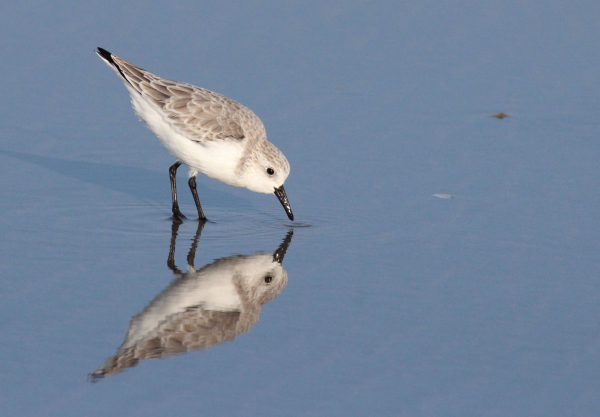
This photo shows an extreme case of providing some extra off-center space, but it effectively shows the Sanderling and its reflection in its surroundings. During a single photo opportunity, you may be able to zoom in and out to compose a number of photos in the field.
Perhaps the best advice I can give you in this article is to try not to center your subject in a photo frame. Centering is a natural product of photography, but it is also a bit of a rookie practice that lacks attention to composition. A simple design option is to use “the rule of thirds.” It’s not a rule, but it’s a good guide to appreciate positioning your subject off-center. This simple practice is to visually divide your photo frame into three parts, horizontally and vertically. The vertical division is usually most important in bird photography, and it gives you a guide to start from; then you can change the positioning of the bird in the frame as you wish.
Off-Center Framing
If you find yourself initially centering the bird in your frame, in part to focus on it; simply move your camera slightly to position the bird to the right or
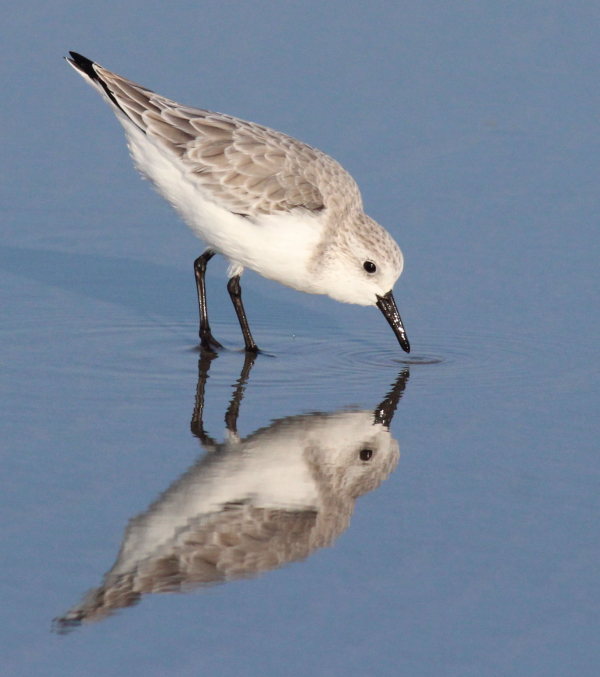
You can also crop the same photo in the way you prefer using photo editing software. Note that there is still extra space to the right of the bird to provide an off-center composition.
|
left of center. For the most part, the bird will dictate whether you want to position it to the right or left. In essence, if the bird is looking right, it’s usually best to position the bird to the left of center, thereby providing a little more space to the right – or a lot more. Likewise, if a bird is flying to the left, it’s usually best to leave some extra space in front of it so it has some space “to fly into.”
If you are using a zoom lens, when you have an opportunity to photograph a trusting bird, after taking your close-ups, zoom out to take some photos with a broader background, thereby adding more landscape or surrounding vegetation. Try a couple different zoom options, perhaps even a photo where the bird is a small part of the overall view – if the surroundings constitute including them, of course make them part of your compositions.
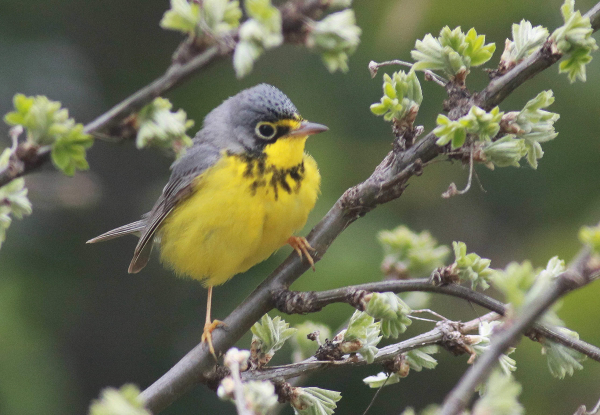
Warblers are such small birds that invariably their surroundings become part of any photo may take of them. An early spring setting for this Canada Warbler provides a subtle flow to the image that would be missing if the bird was centered.
|
Sometimes, this off-center framing can be fairly subtle; other times it can be more dramatic. Overall, it comes down to what looks good to you in each circumstance. There will be times when it may be interesting to leave some extra space below or above the bird as well as to one side. Photo compositions should all be part of the creative thought process that goes into your photography day by day, in the field and in the digital darkroom. With time, you will find yourself keeping this kind of off-center framing as a part of your natural photo inclinations.
Cropping for Space
Sometimes in the field, the action may be too fast to frame a photo or series of photos in just the position you would like them to be. Even in the best of conditions though, there will probably be extraneous space in a favored image. That’s when cropping during your photo editing process provides a great opportunity to frame any photo just the way you see is best for the image. At the same time, there may be more than one option as to how you crop, and thereby frame, a given photo.
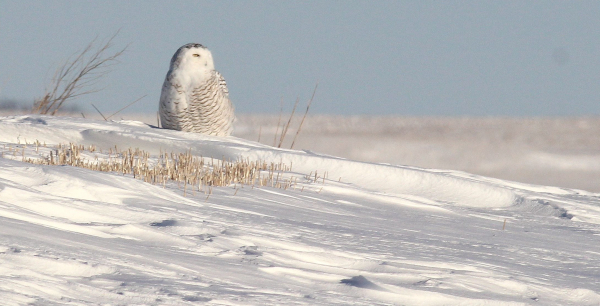
Although Snowy Owls are always exciting subjects, the extreme landscape creates a dramatic winter photo that would not be as effective if the owl was centered in the image.
Even with the same original photograph, you can crop and frame it one way, save that image; then go back to the original photo and crop it a different way, and save that image too. Ultimately, you can be just as creative – even more creative – when cropping a photo; and in the process you will create better photos, while keeping space and positioning in mind. My hope is that you can go into your existing photo files, and make some immediate improvements to some of your photos, simply by creating space at one side or the other by moving the subject off center. Try it, you’ll like it.
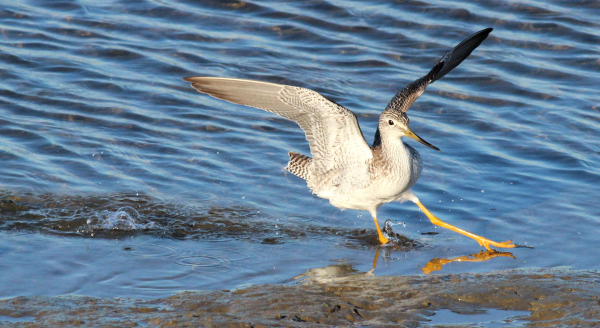
Showing the action of an ungraceful landing places this Greater Yellowlegs in a uniquely off-center position in this photograph.
Article and photographs by Paul Konrad
Share your bird photos and birding experiences at editorstbw2@gmail.com